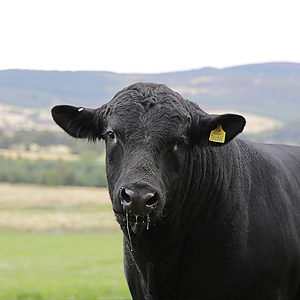Beef Cattles’ Common Diseases and Issues, and Signs That You Should Watch Out For
Blog | February 14th, 2017
Owners of cattle ranches throughout Australia face a number of different challenges when it comes to raising healthy animals for the market, including identifying certain common beef cattle diseases and issues. When they catch these diseases in time, they can remedy them to still raise a viable herd. We list what we consider the top five diseases that these owners should watch for each year.
1. Cattle Tick
In Australia, cattle ticks cause a serious economic strain on the cattle industry. When left untreated, these external parasites can negatively impact weight gain, milk production and hide quality. On top of all this, these ticks transmit blood-bourne fever organisms that lead to serious illness and in some cases death in the cattle. Cattle owners must examine their herds regularly to discover if the ticks are present.
2. Bovine Viral Diarrhoea Virus or BVDV
The bovine viral diarrhoea virus or BVDV can infect cattle with a viral disease that causes diarrhoea along with other issues. This virus is part of the pestivirus genus. Different versions of the virus exist, namely BVDV-1 and BVDV-2. Symptoms of this virus in the latter stages include lethargy, fever, and ocular discharge, loss of appetite, nasal discharge, oral lesions, decreased milk production and diarrhoea. Also, the virus can negatively affect reproduction rates. If the disease progresses unchecked, it can lead to death.
3. Buffalo Fly
Buffalo fly is a serious parasite issue with cattle in Australia. For one thing, the parasite is a voracious feeder and requires up to 40 feedings a day to live. The impact of this can include weight loss, skin lesions and overall health issues along with the devaluation of the hides.
4. Dystocia
Dystocia is the term for calving difficulties and it is a major reason for economic loss throughout Australia’s cattle industry. The condition causes calf and cow deaths, ups veterinary cost during labour and reduces cow production in the terms of milk and reproduction. Causes for this condition include incompatible foetus size with the cow’s pelvic opening, abnormal calving by the cow due to stress or poor nutrition and the foetus is in an undesirable position or is too large.
5. Bloat
As a seasonal issue in cattle, bloat can occur with both beef and dairy cattle and the cause is the consumption of lush pastures that contain lucerne and clover in the spring and other times of the year. Rye grass has also been shown a cause of bloat. A distended abdomen and difficulty breathing are two of the signs of bloat. When this condition is severe, it can lead to death.
For further facts about beef cattles’ common diseases and issues, and the signs to watch for, consult with Southfork Angus. We provide healthy, cattle seed stock throughout the Mornington Peninsula.
Optimized by NetwizardSEO.com.au
